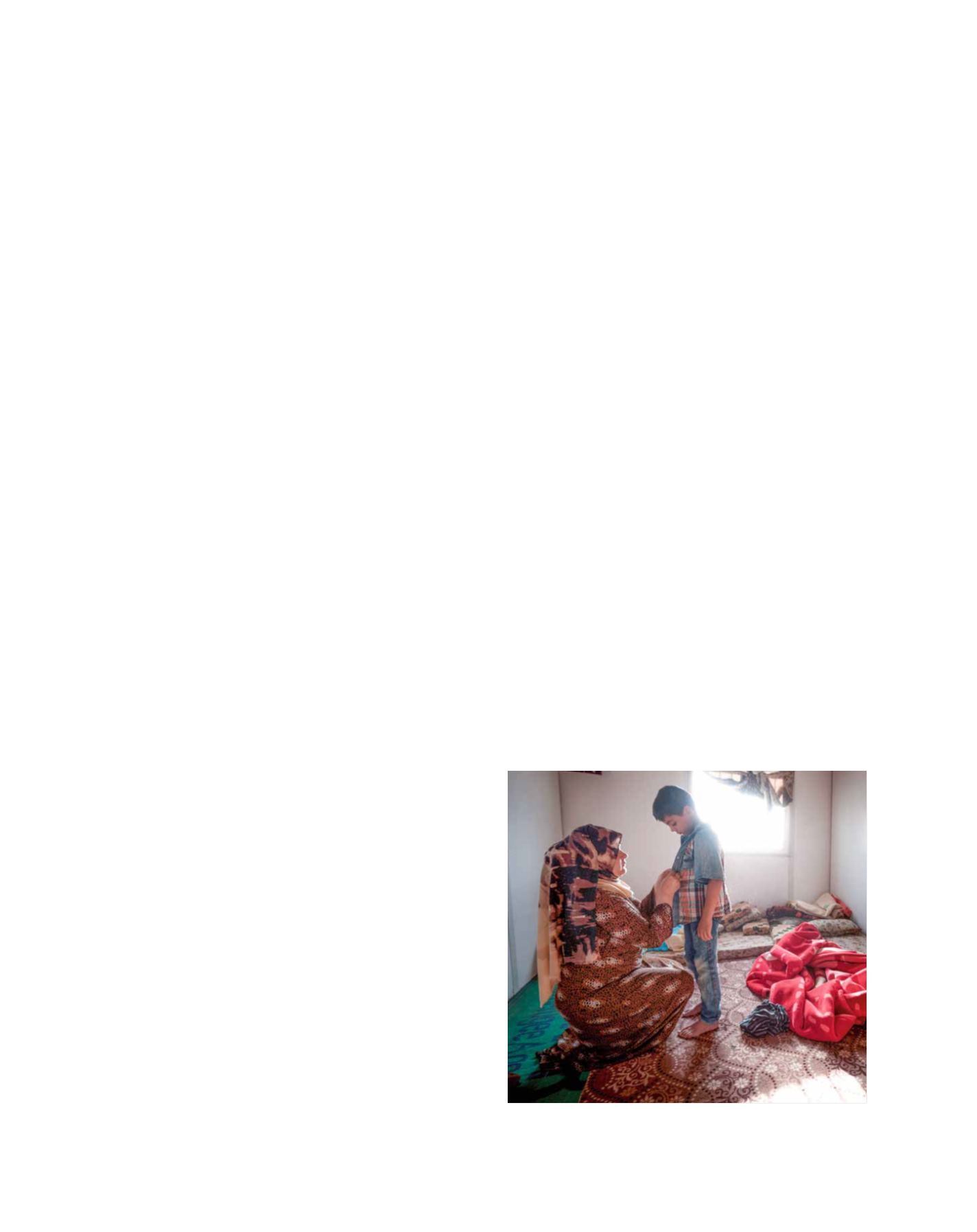

[
] 10
being challenged. They are being starved of resources and
political space and access. Addressing and expanding this
diminishing space for civil society must be a top priority.
Engaging new allies
The media represents a powerful force in shaping how
we see the world, what we think, and often how we act. It
should be an example of gender equality, depicting women
in diverse jobs and situations and representing women in all
areas of coverage. And yet the media is still, in large part,
doing the opposite. In an era where we consider digital media
to be conveying news in the most immediate manner, it is
a problem that the content transmitted has not evolved as
fast as the medium. Gender discrimination deprives media
coverage of the richness that women’s diverse perspectives
can bring, and limits the media’s appeal to increasingly aware
audiences around the world. We now know that the ways in
which women are depicted in news has a profound effect on
societal attitudes and reinforces traditional gender roles. That
recognition brings responsibility. Women and girls are half of
humanity. Giving equal time and weight to their stories is an
important part of creating a better, freer world for all of us.
It is also critical to engage the other half of humanity in
the fight for gender equality – men and boys. In September
2014 Ban Ki-moon officially launched UNWomen’s HeForShe
campaign, together with UN Women Global Goodwill
Ambassador Emma Watson. In the next few days 100,000
men around the world signed up for HeForShe, and more
than 1 billion conversations about the campaign were gener-
ated on Twitter. By now, over 1.3 million men and boys all
over the world have committed to gender equality. HeForShe
recognizes that a more equal world benefits all of us, and for
the world to make real progress on gender equality, we need
women and men to work together to redefine stereotypical
gender roles and reshape ideas about masculinity.
The private sector also plays a critical role in advancing
gender equality and women’s empowerment by institutional-
izing game-changing practices in workplaces and throughout
the supply chain. The private sector has an important stake in
women’s economic empowerment because sustainable develop-
ment also means sustainable growth. McKinsey estimates that
if women in every country played an identical role in markets
to men, as much as $28 trillion would be added to the global
economy by 2025, and the World Bank has estimated that if
all forms of discrimination against female workers and manag-
ers were eliminated, productivity per worker could increase
by up to 40% (2012). Companies must step up and guaran-
tee equal pay for equal work, help women to access credit,
support women entrepreneurs, and provide the flexibility in
working hours that real life demands. Without this support, the
burden of caring for children and ageing parents too often falls
on women, leaving them stuck in low-paid, undervalued jobs
with no opportunity to grow. This is a negative cycle that we are
determined to break, with the support of both governments and
the private sector, where corporate policies can have an imme-
diate and far-reaching impact. Many of the barriers to women’s
economic empowerment, from equal pay to digital inclusion,
and from the care economy to women’s entrepreneurship, are
being addressed by the United Nations Secretary-General’s
new High-Level Panel for Women’s Economic Empowerment,
which aims to provide thought leadership and galvanize politi-
cal will to tackle these challenges.
UN Women also values the contribution of youth, and
consistently seeks new and innovative ways to bring them
into the conversation. Right now more than half the world’s
population is under 30, and that figure is projected to rise
to 75 per cent over the next decade. There are 1.8 billion
young people aged 10-24 years old in the world. Young
women and girls are one of the largest groups affected by
poverty, malnutrition, violence, exclusion from education and
poor health outcomes. They also represent a powerful force
to enact change through the redress of long-standing power
imbalances, and the opportunities to break negative repeating
cycles. We must work hard now to guarantee that they have
the opportunity to come of age in a gender-equal world.
Working together for peace and equality
We are living in a world plagued by conflict, economic inse-
curity, rising extremism and a growing migrant and refugee
crisis. Violent extremists are specifically targeting the rights
and freedoms of women and girls. Women are attacked for
trying to exercise their right to education and basic services.
Girls are raped and turned into sex slaves, given as prizes
to fighters or sold to traffickers. Displaced from their home
setting – which by definition is not safe either – women
and girl refugees in transit and in camps, and those internally
displaced, are at risk of sexual violence, unintended pregnan-
cies and sexually transmitted infections without sufficient
access to vital services. Women and girls make up nearly half
of all international migrants, and are also more likely than
men and boys to migrate internally, often to urban centres.
They, too, risk being subjected to violence, exploitation and
abuse, and to false promises of employment or assistance
from human traffickers. Discrimination and gender inequal-
ity compound these vulnerabilities.
Image: UN Women/Christopher Herwig
Yusra, a beneficiary of the UN Women cash-for-work programme for Syrian
refugees, prepares her family for breakfast in Za’atari camp, Jordan
A B
etter
W
orld
















